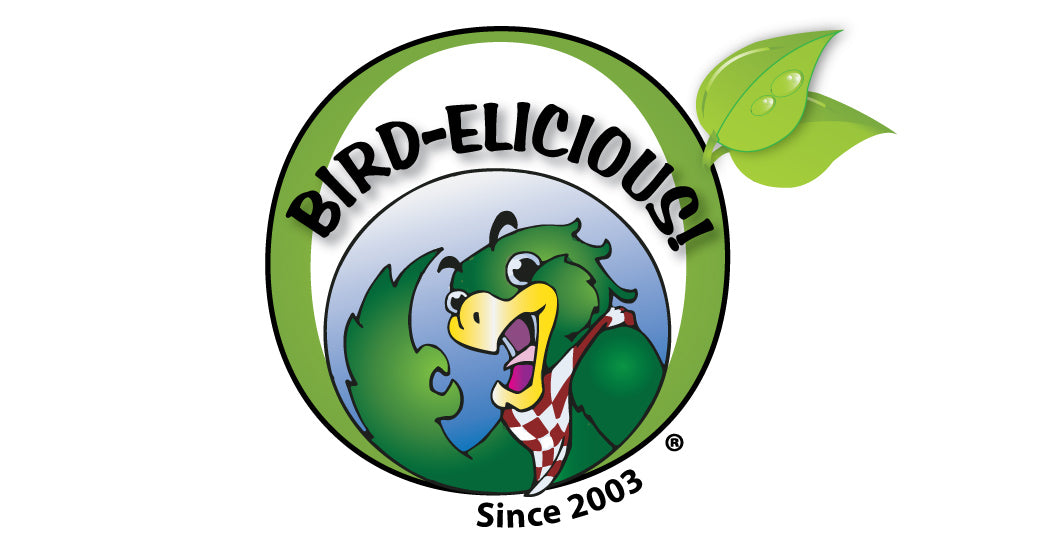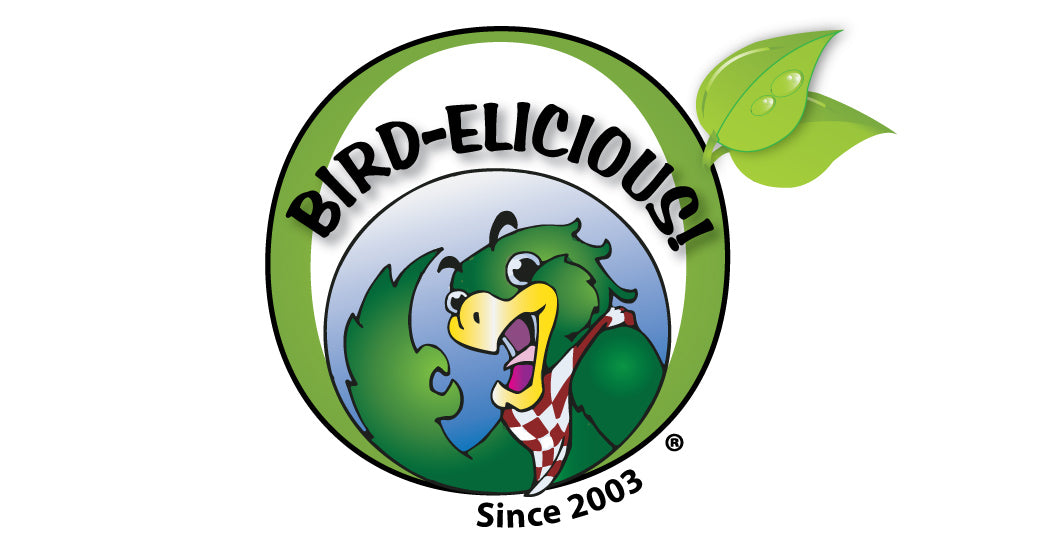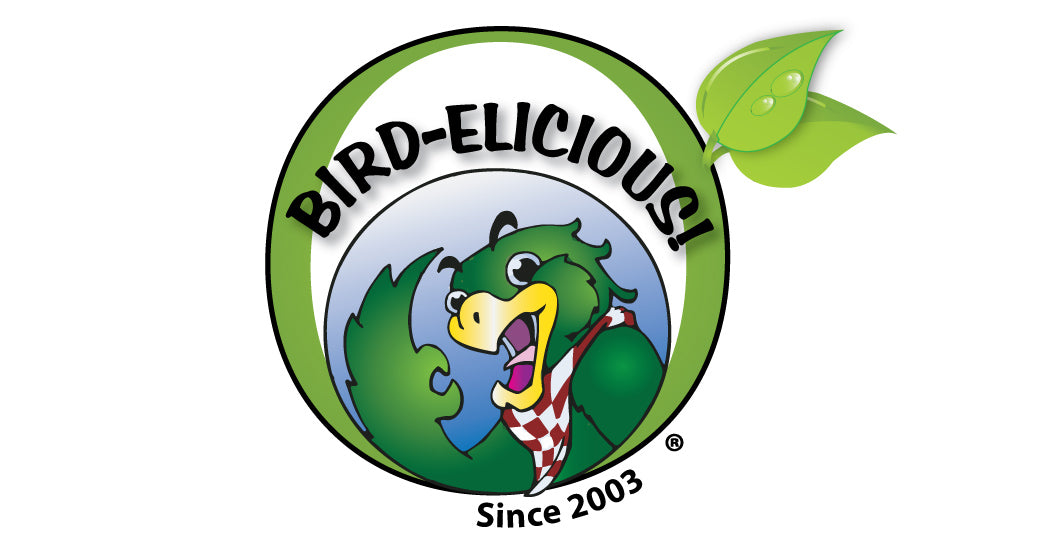Many of us “purists” who believe in fresh, RAW nutrition will tell anyone on any day that feeding fresh, raw foods is the only way to feed our parrots, but in reality is it?
I’m not about to tell anyone to cook their bird’s food or begin feeding highly processed kibble, no not me!
I am here to tell you that feeding certain foods in their raw form without knowing how to balance, and “combine foods” may not be the best idea.
While most of the time feeding raw foods is highly beneficial, foods like fresh tropical fruit and tender greens in the form of micro-greens such as parsley leaves and cilantro are the best to place at the top of your bird’s diet. It’s wise to limit baby greens of just about any young, tender pant on a limited basis if it is a botanical classified vegetable or herb due to the potential amount of tannins present that can block the absorption of iron and B12 synthesis in our birds’ digestive tract.
However, when it comes to sprouts we may need to rethink the sheer amount of sprouts we feed to our birds regardless if those sprouts are legumes, grains or seeds and not for the typical reasons we may think of like high Omega 6s that lead to systemic inflammation. Rather…
Lectins
Lectins are carbohydrate-binding proteins. Just what does that mean in terms of nutrition for our birds? Lectins are a kind of “natural toxin” developed by Nature to ward of pests to protect plants from being consumed. Lectins can slow down or block protein synthesis in vivo (within a living creature) and also bind with sugar preventing carbohydrates to be properly absorbed and metabolized. The details of this means that lectins make cells sticky allowing for attachment to the inside of the digestive tract. Unfortunately this “attachment to the inside of the digestive tract” is partially responsible for “avian leaky gut syndrome” so many of our birds are now suffering. Lectins cannot be digested.
While soaking, sprouting, fermenting and cooking does reduce much of the lectins present in foods none of these methods totally removes all lectins completely. Fermentation seems to be the most effective method to reduce lectins. (1) However if you have a feather destroying bird fermenting will increase histamines which triggers mast cell allergy symptoms. So then if many of the lectins are reduced what’s all the fuss?
As long as we understand that not ALL lectins are removed in any of the above processes, and know that feeding increased amounts of sprouts will cause the “total amount of lectins” passing through our birds’ digestive tracts therefore potentially causing or adding to already existing “avian leaky gut syndrome.” Do you understand what was just stated? When we feed a lot of any one given food we are causing a nutritional imbalance and overload in our birds’ digestive tracts; an overload their systems cannot tolerate over a long period of time.
Expecting our birds to constantly live on fresh, raw foods lopsided in sprouts may be actually cause “avian leaky gut syndrome” due to the leftover lectins in those sprouts that are not removed even though we are doing our best to reduce them through the process of sprouting!
Furthermore if a bird is already immunosuppressant then lectins will definitely have an adverse effect on that bird’s system. Hydrochloric acid production is absolutely necessary when consuming lectins in order to help at least partially break down any lectins passing through the digestive tract. Many of our birds do not produce sufficient hydrochloric acid due to lack of parent feeding soon after hatch, extensive hand-rearing techniques used in modern breeding methods today, and because of the highly processed kibble diets now fed rather than fresh, raw foods. Even a diet of fresh, raw foods may not be sufficient if it is not properly combined and balanced including all of the macro and micro nutrients necessary to address the production and synthesis of every nutrient necessary for our birds to thrive.
Pretty much all plant and animal foods contain some level of lectins by varying degrees. Some contain more than others of course. Grains and legumes seem to contain the highest amounts. (2)
Once in the system lectins cause gas (flatulence) and may contribute to bubbles we sometimes see in bird droppings. They can also cause skin irritations and itching.
Let’s say we are feeding one bird with an average weight of 425-525 grams a half cup of sprouts each and every day. To that 1/3 cup we are feeding 1/3 cup fruit, 1/3 cup tender greens. Can you see that due to the fact that we normally sprout legumes and grains, and by that sheer fact that lectins are higher in legumes and grains this formula is already lopsided in lectins? If we wanted to lower the amount of lectins delivered to our bird we would want to increase tropical fruit, then add tender greens, then sprouts all by declining volume. So in retrospect our recipe might look like this: ½ cup tropical fruit, 3/8 cup tender greens, 1/8 cup sprouts. The item with the most amount of lectins makes up the least amount in our recipe.
In the year 2016 I will be educating our avian community on the importance of food combining. Our community is learning leaps and bounds in regards to the right kinds of food to feed and how to feed those foods! Now it’s time for all of us to begin learning how to combine those foods for maximum nutrition while hoping to avoid anti-nutrition wherever possible. It is impossible to avoid anti-nutrients completely, but we can reduce the negative activity naturally occurring food constituents play in food combining to some extent.
Ref: (1) http://www.marksdailyapple.com/lectins/#axzz3p92AvpJ6; (2) http://ajcn.nutrition.org/content/33/11/2338.full.pdf+html
©10.20.15 Machelle Pacion Passion Tree House LLC All Rights Reserved




Leave a comment (all fields required)